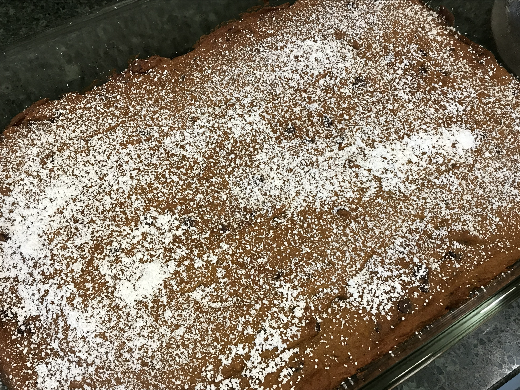This pumpkin -- 13.66 lbs, 33 cents/lb, total cost $4.51.
These pumpkins are referred to as "carving pumpkins," Jack-o'-lanterns, or field pumpkins. They're inexpensive in stores because they are easy to grow given the right conditions. They need space, full sunlight, warm summers, and long growing seasons, all things my own yard lacks. Anyway, their variety tends to be stringier and more watery than those labeled "pie pumpkins." Despite that, for the price, they're a great food for use in recipes.
Cooking
This is the first of two carving pumpkins that I bought this year. On Monday, I used the skin-on, stove-top cooking technique for this one.
I halved the pumpkin and scooped out the seeds, then cut the flesh with the skin of the pumpkin still on into 1-inch wides strips, omitting the stem and the blossom end. I used as much of the pumpkin as I could, including using the flesh just under the stem, and only cutting away a tiny amount of the pumpkin to remove the scar of the blossom end. I should back up just a tad. When I bought the pumpkin, I looked for one with minimal scarring on the skin. I generally trim away scars, as they don't puree as smoothly as the rest of the skin.

Okay, back to cooking the beast. I cooked the pumpkin in two large batches in a medium stockpot. I added about 1 cup of water to the pumpkin slices at the start of cooking, just to get things going. I brought the pot to a boil, reduced to a simmer, and covered, cooking until the skins were so soft I could cut them with the edge of a spoon, about 40 minutes. I stirred the pieces from time to time, when I thought about it. This wasn't a super hands-on job to perform.
Once well-cooked, I removed the lid from the pot and continued cooking for about 20 minutes longer to reduce the liquid. After that, I removed the pot from the heat and allowed the pumpkin to cool for an hour.
At that point I pureed it in the food processor, straining it in a mesh strainer in batches. The strained out liquid was reserved in containers to use a soup stock and as liquid in smoothies or baking.
The final result was about 8 1/2 pints of pumpkin puree,
1 1/2 quarts of pumpkin stock,
and about 1 cup of seeds for roasting and snacking. Disregarding the value of the stock and the seeds, my pumpkin puree works out to be about 53 cents per pint, less than half the price of pumpkin puree in my grocery store. Admittedly, home-cooked pumpkin puree is more watery than commercially-cooked puree. So this isn't exactly an apples to apples comparison. Still, if I could reduce the liquid content of my puree to that of store-bought, I believe home-cooked would be considerably less expensive than buying pumpkin puree.
We use pureed pumpkin in numerous ways, in smoothies, in baking and pancake/waffle making, in soups and sauces, and most recently, in quiche. I use the stock in soup and as liquid in smoothies. And of course, we enjoy the seeds roasted and salted. I find inexpensive carving pumpkins to be a great food source for tight budgets, full of vitamins, minerals, protein, complex carbs, and fiber.
I have one remaining large pumpkin to cook. That one is over 15 pounds. I expect it will yield about 9 pints of puree.











